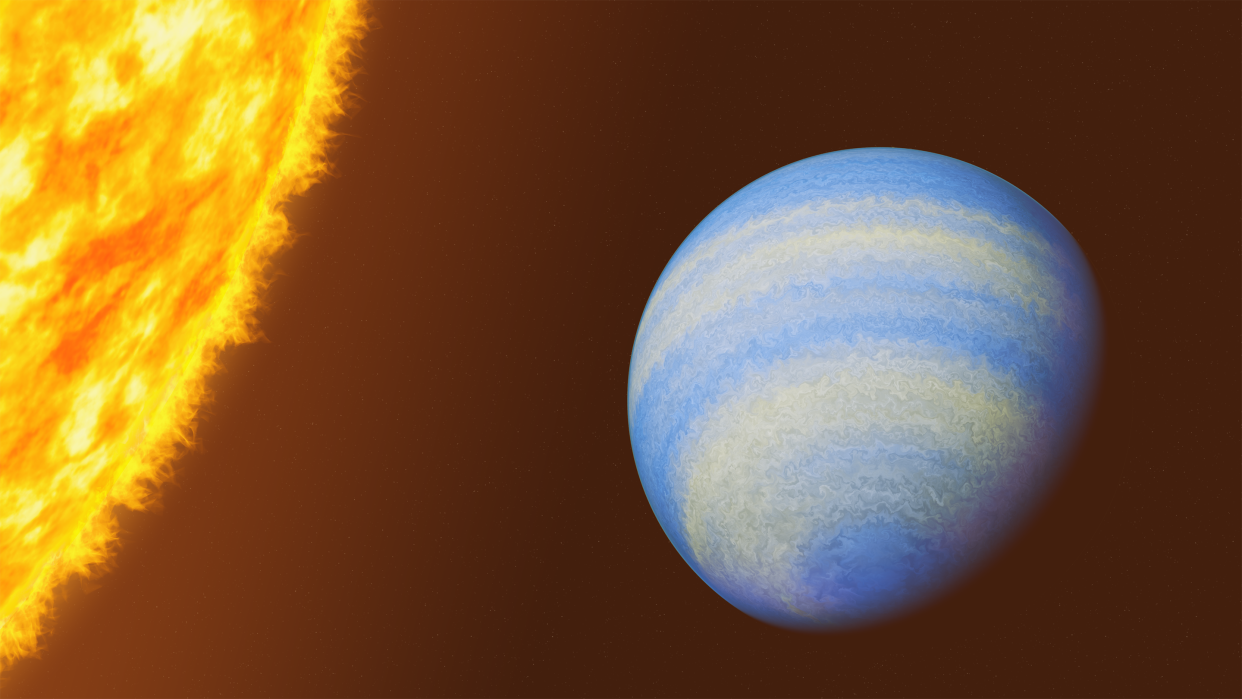Nearby exoplanet stinks of rotten eggs – study

A nearby planet known for its deadly weather also has another strange feature – it stinks of rotten eggs.
New research suggests that the atmosphere of the exoplanet HD 189733 b, a Jupiter-sized gas giant, has trace amounts of hydrogen sulphide.
As well as giving off a stench, this molecule offers scientists new clues about how sulphur, a building block of planets, might influence the insides and atmospheres of exoplanets – planets outside our solar system.
The planet is about 13 times closer to its star than Mercury is to the Sun and takes only about two Earth days to complete an orbit.
It has extremely high temperatures of around 927C and is known for vicious weather, including raining glass that blows sideways on winds of 5,000mph.
Guangwei Fu, an astrophysicist at Johns Hopkins University in the US, who led the research, said: “Hydrogen sulphide is a major molecule that we didn’t know was there.
“We predicted it would be, and we know it’s in Jupiter, but we hadn’t really detected it outside the solar system.
“We’re not looking for life on this planet because it’s way too hot, but finding hydrogen sulphide is a stepping stone for finding this molecule on other planets and gaining more understanding of how different types of planets form.”
The new Johns Hopkins University study of data from the James Webb Space Telescope is published in the Nature journal.
At only 64 light-years from Earth, HD 189733 b is the nearest “hot Jupiter” astronomers can observe passing in front of its star.
Since its discovery in 2005, this has made it a key planet for detailed studies of exoplanetary atmospheres.
The new data from the James Webb Space Telescope also ruled out the presence of methane in HD 189733 b.
“We had been thinking this planet was too hot to have high concentrations of methane, and now we know that it doesn’t,” Mr Fu said.
Next the researchers hope to track sulphur in more exoplanets and figure out how high levels of that compound might influence how close they form near their parent stars.

 Yahoo News
Yahoo News 
